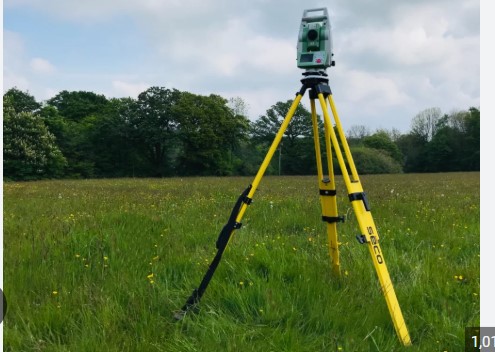
A website is never truly finished. It’s a living project that needs constant attention to meet user expectations and business goals. But how do you know what to improve? Guessing can lead to wasted time and resources on changes that don’t make a real impact. This is where a data-driven approach becomes essential, and one of the most powerful tools at your disposal is the site mapping survey.
Site mapping surveys help you understand how users navigate your website, what they’re looking for, and where they get stuck. By asking visitors to map out their journey or identify key information hubs, you can gather direct feedback to inform your site’s structure, content, and overall user experience (UX). This article will guide you through what site mapping surveys are, why they are invaluable, and how you can implement them to build a website that truly serves your audience.
What Are Site Mapping Surveys?
A site mapping survey is a research method used to understand a user’s mental model of a website’s structure. Instead of just asking for opinions, it prompts users to visually or conceptually organize the content and features of your site. This helps you see your website through your users’ eyes, revealing how they expect information to be grouped and where they intuitively look for specific items.
There are several ways to conduct these surveys:
- Card Sorting: This is a popular technique where you write down topics or pages on individual “cards” (digital or physical) and ask users to group them in a way that makes sense to them. They might also be asked to label these groups.
- Tree Testing: This method tests a proposed site structure. Users are given a task (e.g., “Find information about return policies”) and must click through a simplified, text-only version of your site menu to find the answer. It validates whether your planned navigation is intuitive.
- On-Site Polls: Simple, targeted questions can be deployed on specific pages to ask users if they found what they were looking for or where they would expect to find a certain piece of information.
The collective insights from these activities form the foundation of effective site mapping surveys, providing a clear blueprint for a more user-centric website architecture.
Why Site Mapping Is Crucial for Website Success
Investing time in site mapping surveys offers significant returns by aligning your website’s design with user expectations. A well-structured site leads to a better user experience, which directly impacts key business metrics.
Enhance User Experience (UX)
When a website is easy to navigate, users can find what they need without frustration. A positive experience encourages them to stay longer, explore more pages, and view your brand more favorably. Conversely, a confusing site structure is a primary reason for high bounce rates. If users can’t find what they’re looking for in a few clicks, they’ll likely leave and go to a competitor.
Improve SEO and Search Visibility
Search engines like Google prioritize websites that provide a good user experience. A logical site structure, informed by site mapping surveys, makes it easier for search engine crawlers to index your content effectively. This can lead to better search rankings. Furthermore, an intuitive navigation system encourages users to click through more pages, increasing session duration and signaling to search engines that your site is valuable and engaging.
Increase Conversion Rates
Whether your goal is to generate leads, sell products, or encourage sign-ups, a clear path to conversion is essential. Site mapping surveys help you identify and remove friction points in the user journey. By understanding how users expect to move from a landing page to a thank you page, you can optimize the flow and make it as seamless as possible, leading to higher conversion rates.
How to Conduct Effective Site Mapping Surveys
Ready to get started? Follow these steps to plan and execute a site mapping survey that delivers actionable insights for your website.
- Define Your Objectives
First, clarify what you want to learn. Are you redesigning your entire website? Are you adding a new product category? Or are you trying to understand why users are dropping off at a certain point? Your goals will determine which survey method is most appropriate.
- For a new website or major redesign: Card sorting is ideal for building an information architecture from the ground up.
- For validating an existing or proposed structure: Tree testing is the best choice to see if your navigation works as intended.
- For quick feedback on specific pages: On-site polls can provide targeted insights without a major research effort.
- Prepare Your Survey Materials
Based on your chosen method, you’ll need to prepare your materials.
- For Card Sorting: Create a list of 30-50 key topics or content items from your website. Keep the labels concise and clear. Use tools like OptimalSort, UserZoom, or even just a simple spreadsheet and video call.
- For Tree Testing: Build a “tree” representing your site’s menu structure. Write a set of clear tasks for users to complete, such as “Where would you go to update your password?” or “Find the shipping cost for international orders.” Treejack is a popular tool for this.
- For On-Site Polls: Write one or two direct questions. For example, on a product page, you could ask, “Did this page have all the information you needed to make a decision?” Tools like Hotjar or Qualaroo are great for deploying these polls.
- Recruit the Right Participants
The quality of your insights depends on the quality of your participants. Recruit people who represent your target audience. You can find participants through your email list, social media channels, or by using recruitment services like User Interviews or Respondent.io. Aim for at least 15-20 participants for card sorting or tree testing to identify clear patterns.
- Analyze the Results
Once your survey is complete, it’s time to analyze the data. Look for common themes and patterns.
- Card Sorting Analysis: Identify which cards are frequently grouped together. This will form the basis of your navigation categories. Look at the labels users created for their groups to get ideas for clear menu names.
- Tree Testing Analysis: Review the success rates for each task. Where did users struggle? Which paths did they take? This will highlight confusing labels or illogical structures in your navigation.
- On-Site Poll Analysis: Tally the responses and read through any open-ended feedback. Look for recurring issues or suggestions that can guide immediate improvements.
- Implement and Test Your Changes
Use your findings to make informed changes to your website’s navigation and structure. This might involve renaming menu items, reorganizing content into different sections, or creating new landing pages.
After implementing the changes, don’t stop there. The final step is to test them. You can run another round of tree testing to validate the new structure or use A/B testing to compare the performance of the old and new designs. This ensures your changes have a positive impact on the user experience.
Build a Website That Works for Your Users
A website’s success hinges on its ability to meet user needs efficiently and intuitively. Site mapping surveys provide a direct line to your audience’s expectations, removing the guesswork from website design and optimization. By investing in this research, you create a foundation for a better user experience, improved SEO, and higher conversion rates. Start listening to your users today, and build a website that they will love to use.

